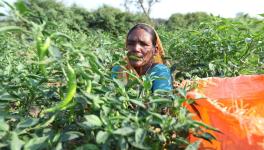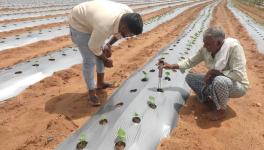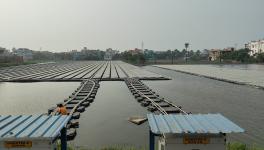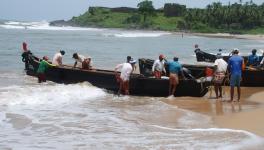Karnataka: Power Crisis Takes a Toll on Fishermen; ice Production Hits All-Time Low
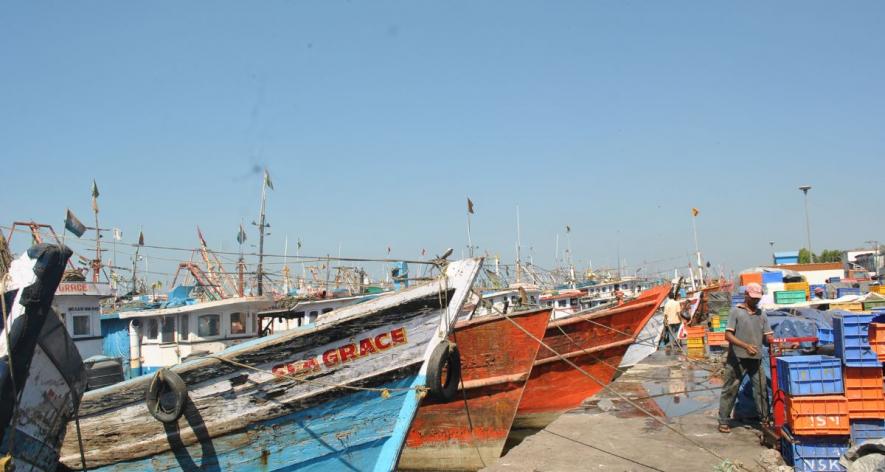
Mangaluru/Udupi/Uttara Kannada: The power crisis has cast a shadow on the fishermen in the coastal areas of Dakshina Kannada, Uttara Kannada and Udupi districts of Karnataka. The success of the fisheries sector depends on the freshness of the catch, for which ice is crucial. Though the power crisis affects the entire state, outages appear to be more virulent in these coastal areas as except for one power plant, all others are located outside these districts.
This year, the problem has been acute due to the fall in production and inequitable distribution of power. A common saying is that whenever Bengaluru falls short of power, the coastal districts bear the brunt. However, according to the Mangalore Electricity Supply Company, the coastal districts are affected first during shortages due to the wheeling problems.
“In recent times, outages and wide-ranging voltage fluctuations have been controlled by load adjusting techniques and by improving the quality of regulators, transformers and even high voltage cables, but the shutdowns cannot be regulated beyond certain levels as the power will have to be shared equally in all parts of the state,” it said.
Since the onset of the power crisis in August, ice plants in the coastal regions are operating at just 30% of their capacity. For instance, a 150-tonne ice plant now produces a mere 45 tonnes daily. “As a result, fishermen along the coast are selling low-value varieties such as mackerel, sardine and pink perch at very low prices,” Harish Salian, a member of the Karavali Meenugarara Kriya Samithi, attested.
Incidentally, the western coast saw a record catch of oil sardines this year, but half of it went to fishmeal factories instead of value-added processing units. If left without ice for a certain period, sardines start to release their oil, which is rich in Omega-3. With the nutritional value gone, the Omega-3 oil manufacturers refuse to buy them. This forces the fishermen cooperatives to put the catch out in the market at Rs 100 to 120 per kg, against the Rs 160 to 180 they receive at the value addition point.
Mackerels are usually sent to the processing plants in Maharashtra’s Ratnagiri for value addition. However, if ice is not available at the time of loading them onto trucks, then fishermen have no option but to sell the catch locally at a price that is about 60% less than what a processing plant would have offered.
The missed opportunity prevents these low-value fish from being transformed into high-value, ready-to-eat dishes for both domestic and export markets. Upcountry markets such as Bengaluru and Mysuru are also deprived of these sought-after fish varieties from Mangaluru and its surroundings.
Vasanth Tandel, a fishmeal producer from Bhatkal, told 101Reporters that the fish wasted or spoiled due to lack of ice reached the fishmeal factories. “We have been getting more stocks due to ice shortage, lack of proper storage and damage during unloading. This was evident from the beginning of the season [August-September] and the end of the season [May-June, depending on the onset of the south-westerly monsoons] since 2021-22. So far, fishmeal factories have been flooded with waste fish. We survive by producing nutrient pellets for shrimp farms, which need comparatively less power,” Vasanth said.
Melting point
Over 14 lakh fishermen community members (Mogaveeras in Udupi and Dakshina Kannada; Tandels, Vaidyas and Harikantras in Uttara Kannada) live in the three coastal districts. A total of 6,800 vessels, including purse seines, longliners, trawlers and coastal catamarans, are manned by 4.5 lakh seafaring fishermen and supported by a total of 2.5 lakh loaders, handlers, segregators, auctioneers and vendors. About 15% of the youth in the community have white-collar jobs, while 20% are into fish value addition, processing, exports and management.
The power crisis has affected half of the total 165 ice plants on the coast. According to the Karnataka Coastal Ice Plant and Cold Storage Owners' Association, there are 63 ice plants in Dakshina Kannada district and 67 in Udupi district, with a total daily ice production capacity of 2,200 tonnes. Right now, they produce only 1,900 tonnes.
"A few hours of power outage in a production day should be made up the next day. When there is no power or quality power available for four hours in a day, we try to recover the lost hours of production the next day. In less than a week, we lose 24 to 32 hours, which is the loss of a day’s production,” Sanjiv Kundar, an office-bearer of Karavali Ice Plant Owners’ Cooperative, told 101Reporters.
A minimum of six hours of uninterrupted power supply is needed to make an ice block weighing 10 kg, for which production cost is Rs 30 against the selling price of Rs 50. As for a 50 kg ice block, the selling price is Rs 250 against the production cost of Rs 175. Similarly, it takes Rs 300 to make a 100 kg block against the Rs 400 it fetches when sold. Using a diesel generator is not financially viable due to the thin profit margin. Like ice plants, crusher units also need a stable power supply to function.
Each ice plant requires an investment of Rs 35 to 50 lakh. It can go up to Rs 1 crore if inverter technology is used. “To break even, the plants must operate without any issues for at least five years,” said Uday Karkera, an ice plant owner in Udupi.
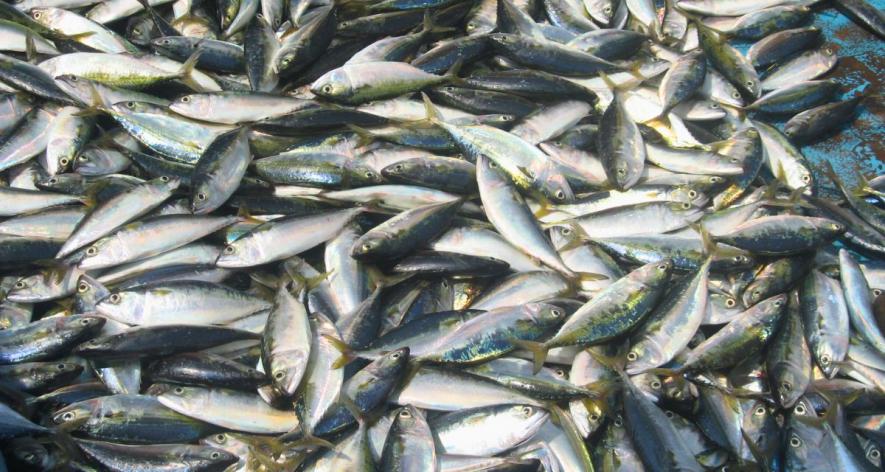
"Ice shortage has affected the processing units as well. Some of the export houses have their own ice plants that they run on diesel generators. But then, their overheads go up substantially and bring down profit margins," Mohan Bengre, director of Dakshina Kannada Ice Plants Cooperative Society, told 101Reporters.
“The 2021-22 fiscal was good for us. We were able to not only hold onto full production but also meet the demand of 2,200 tonnes per day. Exporters often purchased ice from us at higher rates," said Kundar.
According to fishermen leaders, small fishermen groupings cannot afford to use diesel generators for producing ice. Even the cooperative societies are not in a position to run their ice factories on generators.
Hygiene matters the most.
Around 80,000 tonnes of fish are captured in Dakshina Kannada and Udupi districts annually. Of this, 30% is exported to Europe, the Middle East and southeastern countries. Only high-value varieties such as cuttlefish, kingfish, seerfish, white pomfret, ribbonfish, some types of perches and anchovies, tiger prawns and jumbo shrimps are exported.
Prakash Tandel, a fisherman from Karwar, told 101Reporters that the code of practice for fish and fishery products specifies hygienic handling, necessitating immediate icing of freshly caught fish. Inconsistent power supply results in non-uniform ice formation, allowing microbes to thrive in the water and contaminate the fish.
Only the fish export houses are getting quality ice as they pay higher prices. The local fish transporters, vending houses and storage units get second-grade ice, which has a low density and melts faster, giving no shelf value to the catch.
According to the scientists at the Karnataka Veterinary, Animal and Fisheries Sciences University’s composite college in Mangaluru, once the microbe activities begin in fish, it cannot be completely cleared by any procedure. The microbes will persist even in the processed product.
Speaking to 101Reporters on condition of anonymity, the Central Marine Fisheries Research Institute scientists said the governments should keep in mind the fact that the US and European Union markets are very particular that the fish products imported from any part of the world should be free of all pathogens pre and post-processing.
Marine Products Exports Development Authority reiterated the importance of ice inputs to the fresh fish catch at the first point of capture. Ice must be produced abundantly and carried by fishing vessels, especially those remaining in sea for days together, it said. The officials at the Central Institute of Fisheries Technology highlighted the quality of ice used. Since the reefer cargo takes a long time to reach its domestic/foreign destination, the quality and quantity of the ice used become important.
(M Raghuram is a Karnataka-based freelance journalist and a member of 101Reporters, a pan-India network of grassroots reporters.)
Get the latest reports & analysis with people's perspective on Protests, movements & deep analytical videos, discussions of the current affairs in your Telegram app. Subscribe to NewsClick's Telegram channel & get Real-Time updates on stories, as they get published on our website.










